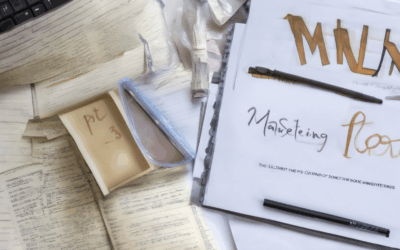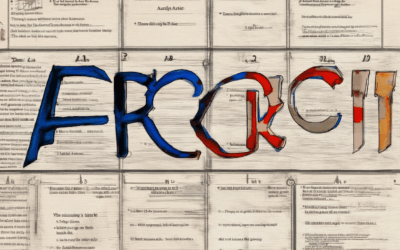Storytelling is the heartbeat of great fiction, weaving intricate threads of emotion, character, and plot to captivate audiences. At its core, effective storytelling in fiction hinges on a masterful blend of essential elements that elevate narratives from ordinary to extraordinary. From crafting compelling characters to designing plots that keep readers hooked, these storytelling elements are the foundation of any engaging tale. Whether it’s the meticulous construction of a plot structure, the immersive settings that transport readers to another world, or the conflicts that drive character growth, every element plays a pivotal role in shaping a memorable story. This article delves into the key storytelling elements in fiction, exploring how they contribute to creating narratives that resonate long after the final page. By unlocking the secrets of these elements, writers can unlock the full potential of their craft and craft stories that truly inspire.
Key Takeaways
- Craft a Compelling Plot Structure: Develop a structured narrative with clear phases—inciting incident, rising action, climax, and resolution—to keep readers engaged.
- Develop Relatable Characters: Create well-rounded characters with distinct backstories and arcs that resonate with readers.
- Immerse Readers in Rich Settings: Design detailed settings that reflect the story’s mood and theme, offering an immersive experience.
- Infuse a Central Theme: Identify a theme that resonates personally, guiding your creative decisions and adding depth.
- Drive the Story with Conflict: Utilize both internal and external conflicts to propel the narrative forward.
- Heighten Stakes for Urgency: Introduce high stakes to create urgency and maintain reader interest.
- Balance Pacing Dynamically: Maintain a varied pace, blending reflective moments with action to sustain engagement.
- Choose the Right Point of View: Select a perspective (first-person, omniscient, or limited third-person) that enhances your storytelling effectiveness.
- Enhance Sensory Experiences: Use vivid imagery and descriptions to immerse readers in the story’s world.
- Write Engaging Dialogue: Craft realistic conversations that reveal character traits and advance the plot naturally.

What Are the Key Elements of Storytelling Used in Fiction?
The art of storytelling in fiction is a complex yet essential skill that captivates audiences and keeps them engaged. Here are the key elements that make up effective storytelling:
- Protagonist Development : A compelling protagonist is the heart of any story. They must be relatable, flawed, and driven by a clear motive. Whether it’s a hero facing adversity or an antihero seeking redemption, a well-developed protagonist draws readers in.
- Conflict and Plot Structure : Every great story revolves around conflict. This could be internal, external, or both. The plot structure should have a clear beginning, middle, and end, with rising action and climax that propels the narrative forward.
- Setting : The environment or setting plays a crucial role in shaping the story. It can influence the mood, themes, and character behavior. Whether it’s a bustling city, a serene countryside, or a dystopian future, the setting helps create immersion.
- Themes and Motifs : Themes provide the underlying meaning of the story, while motifs are recurring elements that reinforce those themes. These can be symbols, objects, or actions that consistently appear throughout the narrative.
- Character Relationships : The interactions between characters drive the story forward. Strong relationships, whether between friends, enemies, or lovers, add depth and emotional resonance to the tale.
- Pacing : Pacing determines how quickly the story unfolds. It must balance slow, reflective moments with fast-paced, action-packed sequences to maintain engagement and keep readers hooked.
- Imagery and Description : Vivid imagery and descriptive language bring the story world to life. It allows readers to visualize scenes, settings, and characters, making the narrative more immersive.
Mastering these elements requires practice and a deep understanding of what makes stories resonate with readers. By focusing on these key components, writers can craft narratives that are not only entertaining but also emotionally impactful and thought-provoking.
What Are the Key Elements Needed When Creating a Compelling Story in Fiction?
- Plot Structure: A well-crafted plot requires a clear beginning, middle, and end. The opening hook grabs attention, the premise sets the stage, and the stakes drive the narrative forward. A defined conflict keeps readers engaged, leading to a climax and resolution.
- Character Development: Relatable and multi-dimensional characters are essential. Their motivations, arcs, and growth add depth. Protagonists should face meaningful challenges, while supporting characters enrich the story.
- Setting: The backdrop plays a crucial role. A believable setting immerses readers, providing context and atmosphere. Consistency in world-building enhances immersion.
- Conflict and Tension: Introduce both external and internal conflicts to create stakes and tension. Meaningful challenges force characters to grow, propelling the narrative forward.
- Themes and Messages: Themes provide depth, offering lessons or reflections. A strong theme ties the story together, resonating with readers on a personal level.
- Pacing and Style: Balance between fast-paced moments and reflective sections. A consistent tone and style maintain coherence, while varied pacing keeps readers engaged.
- Editing and Refinement: Polishing ensures clarity and impact. Feedback helps refine elements, making the story more compelling and polished.
For further insights, explore James Whitfield Thomson’s guide on mastering storytelling elements, which delves into advanced techniques and tips for aspiring writers.

What Are the Key Storytelling Elements in Fiction That Make a Narrative Engaging?
An engaging narrative in fiction is built upon several key elements that work together to captivate readers. Here’s a breakdown of these essential components:
- Plot : A well-crafted plot is the backbone of any story. It should have a strong premise, clear stakes, and a logical progression of events. A compelling plot keeps readers invested, driving them to turn the page and uncover what happens next.
- Character : Characters are the lifeblood of a story. They must be well-developed, relatable, and multifaceted. Whether they’re protagonists or antagonists, their motivations, flaws, and growth throughout the story add depth and emotional resonance.
- Setting : The setting plays a crucial role in establishing the tone and mood of the story. Whether it’s a bustling city, a serene countryside, or a dystopian future, the setting should feel authentic and contribute to the characters’ experiences.
- Conflict : Conflict is what drives the story forward. It can be external, like a battle between good and evil, or internal, such as a character struggling with self-doubt. Effective conflict creates tension and propels the narrative toward its resolution.
- Resolution : The resolution ties up loose ends and provides closure. It should satisfy the reader while leaving room for reflection or a lasting impression.
- Pacing : A well-paced story balances moments of high tension with quieter, reflective scenes. Slow pacing allows for character development and atmospheric building, while fast-paced segments keep the story moving and maintain the reader’s interest.
- Imagery and Symbolism : Rich imagery and symbolism elevate a story by painting vivid pictures in the reader’s mind. These elements can convey complex ideas and emotions without direct explanation.
- Foreshadowing : Foreshadowing hints at future events or themes, creating anticipation and mystery. It keeps readers guessing and invested in the outcome.
- Point of View (POV) : Limiting the story to a single P.O.V. can deepen the immersion, allowing readers to share the protagonist’s thoughts and feelings. Consistency in the P.O.V. enhances the narrative’s credibility.
- Emotional Engagement : Stories that connect with readers on an emotional level are the most impactful. Whether it’s joy, sorrow, or fear, emotional engagement makes the narrative memorable.
By masterfully combining these elements, authors can create stories that resonate with readers long after the final page is turned. For deeper insights into crafting compelling narratives, explore our resources on James Whitfield Thomson and other leading literary platforms.
Additionally, for more tips on refining your storytelling skills, check out Writester and The Writing Base , which offer valuable guides and tools for aspiring writers.

Key Storytelling Elements for Creating Engaging Fiction
An engaging fiction story is built on several essential elements that work together to captivate readers. Here’s a breakdown of the most critical ones:
- Plot Structure :
A strong plot provides the backbone of your story. It includes elements like inciting incident, rising action, climax, and resolution. A well-structured plot keeps readers invested, guiding them through your narrative while maintaining suspense. - Character Development :
Characters are the heart of any story. Whether it’s the protagonist, antagonist, or supporting cast, each should be well-defined. Readers connect with relatable characters, making their journeys and struggles meaningful. - Setting :
The setting serves as the stage where your story unfolds. Whether it’s a bustling city, a remote village, or a futuristic world, the setting should feel real and immersive. It adds depth and helps set the tone of your narrative. - Theme :
Every great story has a central theme or message. Identifying yours helps guide your choices in plot and character development. Themes like redemption, love, or identity can resonate deeply with readers. - Conflict :
Conflict drives your story forward. It can be external (like a quest or battle) or internal (like personal growth or emotional struggles). Without conflict, your story lacks direction and interest. - Stakes :
High stakes make your story compelling. Whether it’s life-or-death situations or personal sacrifices, stakes create urgency and keep readers hooked. - Pacing :
A balanced pace keeps readers engaged. Too fast, and details feel rushed. Too slow, and attention wanes. Find the right rhythm to maintain momentum. - Point of View (POV) :
Choosing the right POV—first-person, omniscient, or limited third-person—can greatly impact how readers connect with your story. It also influences how events are revealed. - Imagery and Description :
Vivid imagery and descriptive language bring your scenes to life. They help readers visualize settings and characters, making your story more immersive. - Dialogue :
Effective dialogue reveals character traits and advances the plot. It should feel natural and contribute to the overall narrative without overshadowing it.
By mastering these elements, you can craft stories that resonate emotionally and keep readers hooked from beginning to end.
What Are the Key Elements of Storytelling Used in Fiction?
The art of storytelling in fiction is a complex yet essential skill that captivates audiences and keeps them engaged. Here are the key elements that make up effective storytelling:
- Protagonist Development : A compelling protagonist is the heart of any story. They must be relatable, flawed, and driven by a clear motive. Whether it’s a hero facing adversity or an antihero seeking redemption, a well-developed protagonist draws readers in.
- Conflict and Plot Structure : Every great story revolves around conflict. This could be internal, external, or both. The plot structure should have a clear beginning, middle, and end, with rising action and climax that propels the narrative forward.
- Setting : The environment or setting plays a crucial role in shaping the story. It can influence the mood, themes, and character behavior. Whether it’s a bustling city, a serene countryside, or a dystopian future, the setting helps create immersion.
- Themes and Motifs : Themes provide the underlying meaning of the story, while motifs are recurring elements that reinforce those themes. These can be symbols, objects, or actions that consistently appear throughout the narrative.
- Character Relationships : The interactions between characters drive the story forward. Strong relationships, whether between friends, enemies, or lovers, add depth and emotional resonance to the tale.
- Pacing : Pacing determines how quickly the story unfolds. It must balance slow, reflective moments with fast-paced, action-packed sequences to maintain engagement and keep readers hooked.
- Imagery and Description : Vivid imagery and descriptive language bring the story world to life. It allows readers to visualize scenes, settings, and characters, making the narrative more immersive.
Mastering these elements requires practice and a deep understanding of what makes stories resonate with readers. By focusing on these key components, writers can craft narratives that are not only entertaining but also emotionally impactful and thought-provoking.

What Are the Key Storytelling Elements in Fiction?
Fiction writing relies on several key elements to create engaging and immersive narratives. These elements work together to capture the audience’s attention, maintain interest, and leave a lasting impression. Here’s a breakdown of the most crucial components:
- Character Development
- Well-defined protagonists and antagonists drive the story forward.
- Character arcs showcase growth, transformation, and depth.
- Unique personalities and backstories make characters memorable.
- Plot Structure
- A strong hook grabs attention from the beginning.
- Conflict and tension keep the story moving forward.
- Climax and resolution satisfy the audience’s expectations.
- Setting
- The environment reflects the mood and theme of the story.
- Detailed settings help immerse readers in the world.
- Settings can symbolize larger concepts or ideas.
- Conflict
- Internal and external conflicts add layers to the narrative.
- Conflict creates stakes and keeps readers invested.
- Resolution often leaves a lasting impact on the reader.
- Themes
- Underlying messages give the story deeper meaning.
- Themes resonate with the audience on a personal level.
- Exploring universal themes broadens the story’s appeal.
- Imagery and Description
- Vivid imagery paints scenes in the reader’s mind.
- Descriptions enhance emotional engagement.
- Sensory details make the story more immersive.
- Pacing
- Balancing slow and fast-paced moments keeps readers engaged.
- Building suspense accelerates the narrative.
- Slow reveals allow information to unfold naturally.
- Dialogue
- Conversations reveal character traits and relationships.
- Effective dialogue moves the story forward.
- Diverse voices enrich the narrative experience.
- World-Building
- Crafting a believable world adds realism.
- Consistency is key to immersion.
- Details in world-building enhance the narrative.
By masterfully combining these elements, authors can create stories that captivate, inspire, and linger in the minds of readers long after the final page is turned. At James Whitfield Thomson, we explore these storytelling techniques in depth, offering insights and tips to help writers craft compelling narratives.





0 Comments